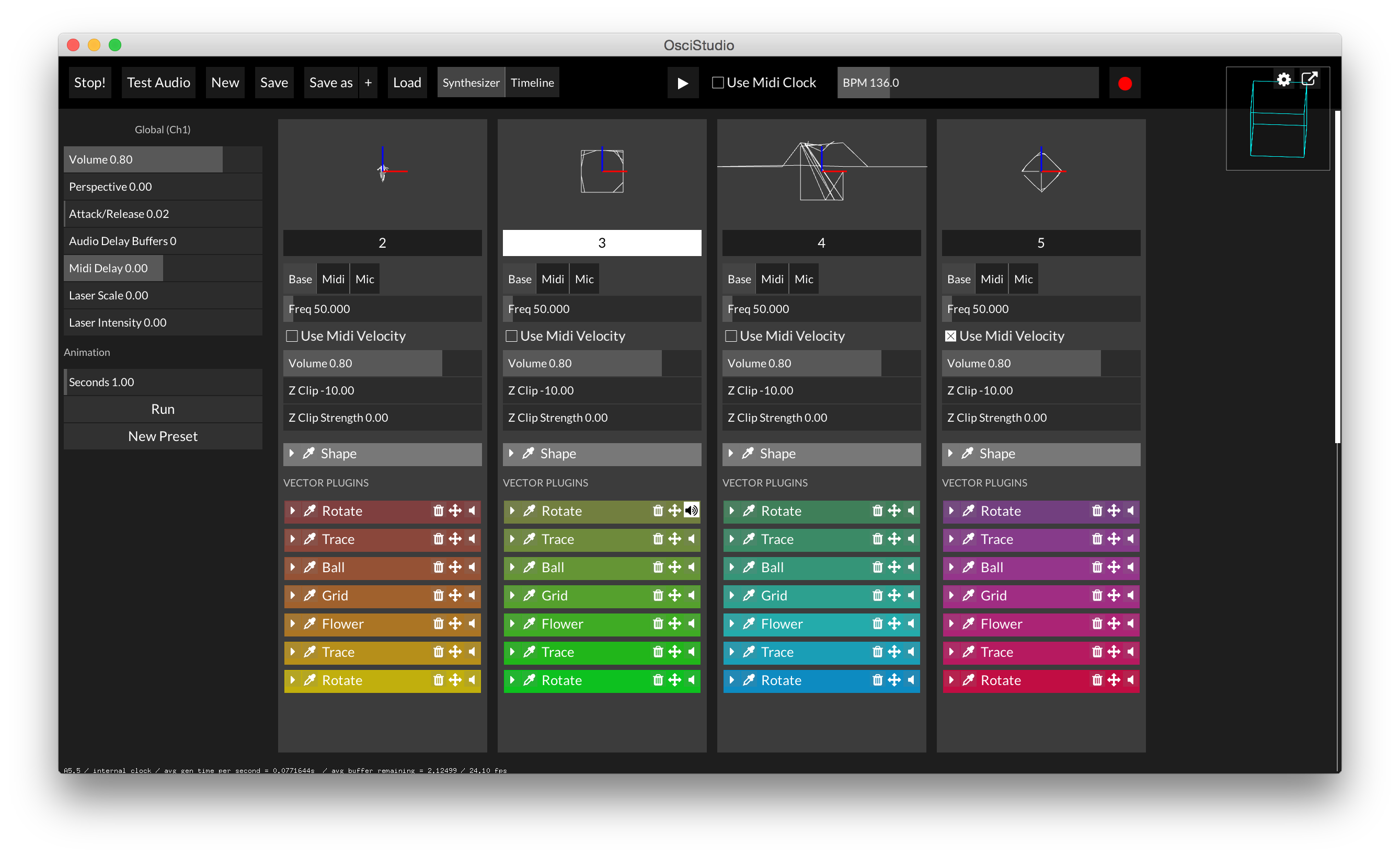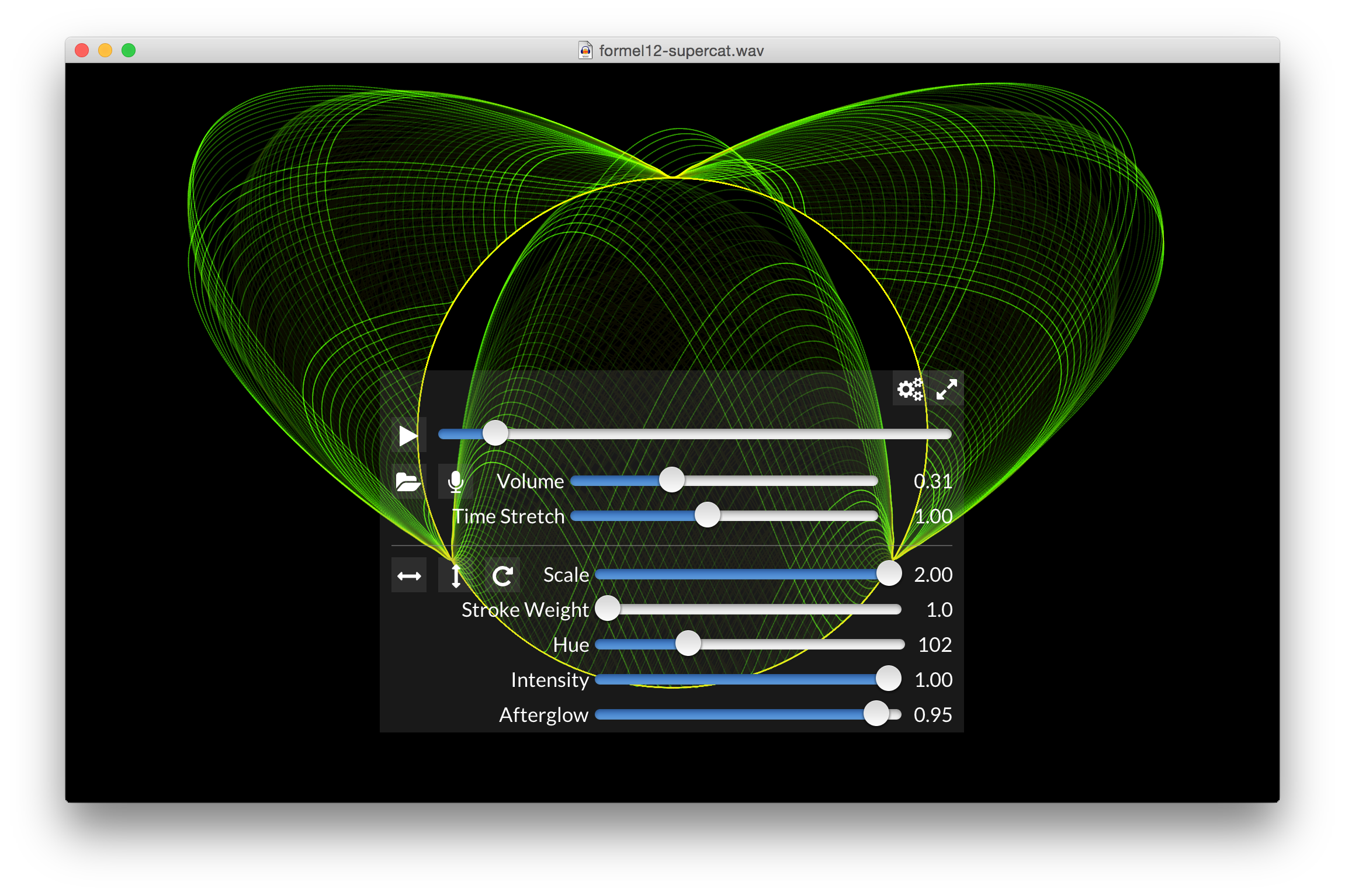Documentation is not exactly up to date.
A handy UI addon for openFrameworks Version 0.10.
This is supposed to be a small but flexible UI library that runs cross-platform with multitouch support.
The library aims to only provide a minimal set of elements needed for basic interactive artworks: sliders, segmented controls, buttons, labels, toolbars/navigation bars, internal windows, textfields
ofxMightyUI is a personal project and developed for my specific needs.
This is very much a work in progress. The following works/worked/should work:
- Internal Windows (draggable, with titles and optional left/right toolbar buttons)
- Labels (with all sorts of alignments)
- Sliders (multitouch enabled, optionally with value labels)
- Buttons
- Textfields (based on stb_textedit)
- Scrollpanes
- Segmented buttons (the equivalent of radio buttons in a way)
- Retina support
Download the current master branch for ofxMightyUI and ofxFontStash, either as zip or clone from git with
cd OF/addons
git clone https://github.com/kritzikratzi/ofxMightyUI.git
git clone https://github.com/kritzikratzi/ofxFontStash2.git
Edit addons.make and add this line:
ofxMightyUI
ofxFontStash2
Then regenerate your project. If you get missing fonts, then double check that the folder addons/ofxMighty/bin/data gets copied to your bin folder.
There's a longer example in the src/ folder.
ofApp.h
#include "MUI.h"
class testApp{
// Root element to which you can add your UI elements
mui::Root *root;
mui::Button * button;
mui::SliderWithLabel * slider;
// callback used for the button onPress
void onButtonPress( const void* sender, ofTouchEventArgs &args );
}
ofApp.cpp
void testApp::setup(){
...
// create root element
// this attaches to OF and handles draw/update/mouse/key/... by itself.
root = new mui::Root();
// create button and register add listener
button = new mui::Button( "Button", 20, 200, 70, 30 );
ofAddListener( button->onPress, this, &testApp::onButtonPress );
root->add( button );
}
//--------------------------------------------------------------
void testApp::onButtonPress( const void* sender, ofTouchEventArgs &args ){
cout << "the button was pressed!" << endl;
}
| Component | Description |
|---|---|
| Container | Basis for everything. Has (optional) opaque background and takes care of handling touch and key events |
| Root | Takes care of embeding ofxMightyUI into an openFrameworks base class |
| Label | A text label with vertical and horizontal alignment and text color |
| Button | A clickable button with an onPress eventlistener. Contains a label |
| ToggleButton | Same as button, but has two states (selected=true/false) |
| InternalWindow | |
| ScrollPane | Takes care of clipping and efficiently display lots of items. Supports scroll wheel and touch scroll, optional paging and autoscroll (for logs). |
| SegmentedSelected | A set of buttons to choose between various options (e.g. color=red/green/blue). Uses templates to attach data to the options |
| Slider | A simple horizontal slider |
| SliderWithLabel | A slider, with a label that displays the current value. |
| TextField | Deprecated! Native textfield overlay. Will be gone soon. |
| TextArea | In progress, unusable. TextField replacement |
Especially more complex layouts can be tricky to get right. ofxMightyUI uses a very straight forward approach without springs, layout managers or bindings.
Here is a simple example. We have a form with two labels+sliders (hue and size).
#include "MuiL.h" // L for layout
class MyForm : public mui::Container{
mui::Label * sizeLabel;
mui::Slider * sizeSlider;
mui::Label * hueLabel;
mui::Slider * sizeSlider;
MyForm(){
sizeLabel = mui::Label("Size:", 0,0,100,30);
add(sizeLabel);
sizeSlider = new mui::Slider(0,0,100,30, 100,200,150 ); // a slider 100x30 large, values 100.200, default 150
add(sizeSlider);
hueLabel = new mui::Label("Hue:", 0,0, 100,30);
add(hueLabel);
hueSlider = new mui::Slider(0,0,100,30, 100,200,150 ); // a slider 100x30 large, values 100.200, default 150
add(hueSlider);
}
~MyForm(){
delete sizeLabel;
delete sizeSlider;
delete hueLabel;
delete hueSlider;
}
// call on the first frame, and whenever the size of the window changes
void layout(){
// move the size label 10 px from top left
mui::L(sizeLabel).posTL(10,10);
// place the slider next to the label (5px space), and use all available width (minus ten pixels)
mui::L(sizeSlider).rightOf(sizeLabel, 5);
// place the hue label below the size label, leaving a 5 px space.
mui::L(hueLabel).below(sizeLabel,5);
// and the hue slider next to the hue label.
mui::L(hueSlider).rightOf(hueLabel, 5);
// in this case, we want our own size
ofRectangle size = getChildBounds();
width = size.width;
height = size.height;
}
};
All events (update,draw,mouse,touch,keyboard,layouting) can be intercepted with lambda functions.
See Container.h for a full list.
// create a button with a border
mui::Button * button = new mui::Button();
button->onDraw.add([button](){
// red when over, otherwise gray
if(isMouseOver()) ofSetColor(255,0,0);
else ofSetColor(150);
ofDrawRectangle(0,0,button->width,button->height);
ofSetColor(255); // always reset to white after drawing!
});
Third party software/assets used:
- ofxFontStash2 / fontstash (MIT license?)
- CppTweener: MIT License
- iPhone4 GUI for Photoshop cc-sa-by
- Lato Regular font: Sil open font license
The project itself is released under the MIT License.

